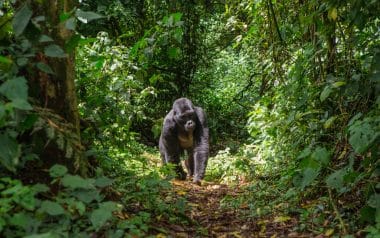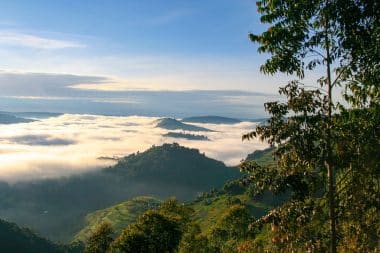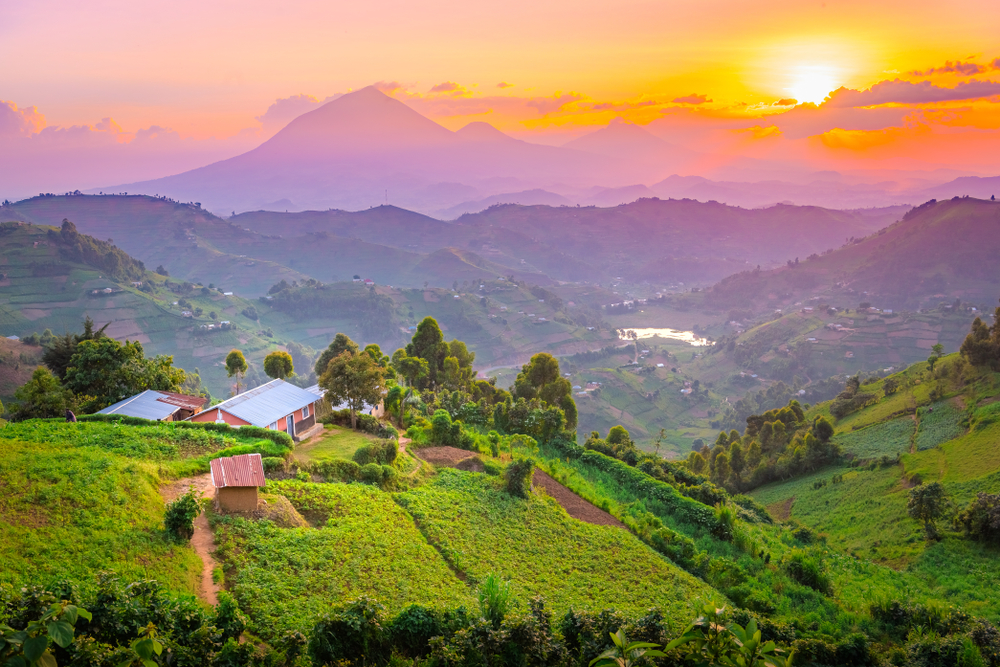Pearls are said to be a very special gift from nature. They are certainly products of a cheerful day of creation. “Uganda is the pearl of the African continent”. This sentence is attributed to none other than the legendary British Prime Minister Sir Winston Churchill. He was not necessarily considered a person who tended to romantic rhetoric, but during his stay as colonial secretary in Africa, he went into raptures after a visit to Uganda. And this despite the fact that he suspected that the time of the British presence on the great continent was coming to an end. Churchill was fascinated by the variety of landscapes, the lush vegetation, the rich fauna and the pleasant climate in Uganda, even for Europeans. Today, visitors to Uganda search for the country’s greatest treasure in the rainforest – the mountain gorillas.
The ecological disaster on Lake Victoria
Uganda is a landlocked country – surrounded by two much larger neighbours. From the Democratic Republic of the Congo and Kenya. In the south, a mighty lake borders the country to Tanzania – Lake Victoria in the East African plateau. It suffers from an ecological disaster due to the rapid proliferation of the water hyacinths found here. However, the former principality of Uganda surprises with numerous surprising landscapes. With the endless plains of the national park, which was named after the British Queen Elizabeth, with the often mist-shrouded fire mountains and, last but not least, with the gorillas, which developed into an important source of income for the country. And this is simply because tourists from all over the world travel to Uganda to observe the families of the “silverbacks” up close.
Uganda – Undeveloped as in Stanley’s time

Kintu Dynasty and the Buganda Tombs

The steep paths to the mountain gorillas
The economy of this country in East Africa is enjoying an astonishing development. In order to attract holidaymakers to travel through Uganda, the authorities opened no fewer than ten national parks. “Oh Uganda – Land of Beauty” – so it says in the national anthem of the state. On a round trip, guests from another world meet friendly people almost everywhere and now and then also the heirs of the Batwa and Bambuti pygmies. Anyone who has signed up for a “gorilla trekking” should know that only those holidaymakers who do not have a cold will be taken along. The danger that the endangered animals could become infected in the rainforest should not be underestimated. You should also be in good shape, because the paths to the gorillas lead over narrow and often steep paths.
Bwindi Impenetrable Forest National Park in Uganda – eye to eye with the giants of the forests
Forest elephants populate the jungle in Uganda, and participants in a gorilla safari occasionally encounter lions in their search for the gorillas, most of which came from Congo’s Virunga National Park and tend to doze on fig trees during the day. The Bwindi Impenetrable Forest National Park in the Ugandan highlands is the ancestral home of almost half of all around a thousand mountain gorillas worldwide. Anyone who has ever looked one of the jungle giants, who genetically have so much in common with humans, in the eye, will never forget this. The powerful animals, which live in family groups, are used to small groups of human visitors visiting them. They almost always radiate a certain serenity and look at the holidaymakers with brown eyes when they meet. After about an hour, the visit to the mountain gorillas is over, because the inhabitants of the forests should not be disturbed in their refuge more than necessary. This is also Uganda’s contribution to environmental protection.


